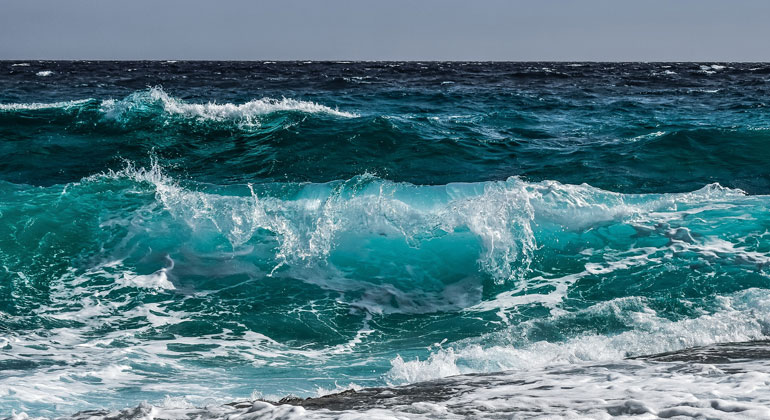How much methane is released by the ocean?
New study reduces uncertainties in emissions of this important greenhouse gas – Methane (CH4) is a strong greenhouse gas that has both anthropogenic and natural sources. The ocean also plays an important role.
A new study published in the journal Nature Communications by American and German scientists, involving GEOMAR Helmholtz Centre for Ocean Research in Kiel shows that the uncertainties in global oceanic methane emissions can be reduced by two thirds.
Methane (CH4) is a strong greenhouse gas responsible for about 20% of the anthropogenic greenhouse effect. The anthropogenic influence on the atmospheric CH4 content is caused not only by direct emissions, but also by climate-induced changes in the natural CH4 cycle. The ocean is one of the natural sources of methane, but previous estimates of methane emissions from the ocean are associated with large uncertainties.
This is due to the fact that there are still very few measurements of CH4 concentrations in the ocean and that the distribution of methane in the ocean is very variable. While surface concentrations in biologically unproductive open ocean regions are almost in equilibrium with the atmosphere, they can be more than 1000 times higher in some shallow coastal areas. Global estimates of oceanic methane sources to date have been made by merging the results of various regional studies.
The study, now published by American and German scientists in the scientific journal Nature Communications, presents the first global estimate of methane emissions from the ocean, based on the compilation of available CH4data of the global surface ocean. From this data set, a global climatology of the imbalance of methane between ocean and atmosphere (ΔCH4) was compiled. These data were then used to train two different machine learning models (Artificial Neural Networks (ANN) and Random Regression Forest (RRF)), which calculate a continuous global ΔCH4 distribution map from the individual data. Both methods use similarities in the distribution patterns of ΔCH4 and different physical, chemical and biological parameters whose oceanic distributions are well known. Finally, the resulting ΔCH4 distribution was used to calculate the global CH4 flux from the ocean. This calculation was complemented by an estimate of the ebullitive CH4 flux that results from gas bubbles that rise from the sediments to the ocean surface.
Most of the data used to produce the ΔCH4 maps are taken from the MEMENTO database (MarinE MethanE and NiTrous Oxide, https://memento.geomar.de), which is maintained at GEOMAR Helmholtz Centre for Ocean Research Kiel. “MEMENTO collects marine methane and nitrous oxide data from the global ocean, which are open to use for interested users”, explains Dr. Annette Kock, coordinator of the database and co-author of the GEOMAR study. MEMENTO currently contains about 36,000 data entries for oceanic methane measurements and about 120,000 data entries for oceanic nitrous oxide measurements from more than 300 measurement campaigns.
“Our study perfectly shows the benefit of compiling data from isolated sampling campaigns into a comprehensive, harmonized data collection”, says Dr. Kock. “The new estimate of methane emissions lies between 6 to 12 terragrams (Tg) CH4 per year and reduces the uncertainty in the oceanic methane source by two thirds compared to earlier estimates (5-25 Tg CH4 per year). “Thus, our work contributes to a better quantification of the atmospheric methane budget”, Kock concludes.
- Weber, T., N.A. Wiseman and A. Kock, 2019: Global ocean methane emissions dominated by shallow coastal waters, Nature Communications, https://doi.org/10.1038/s41467-019-12541-7








